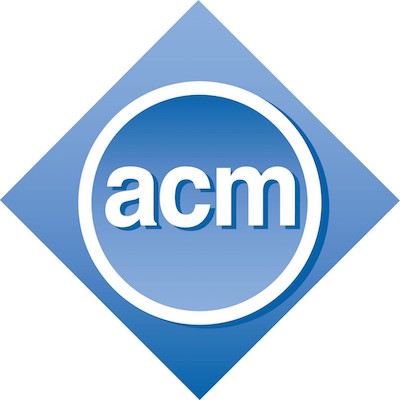|
International Workshop on Traffic Measurements for Cybersecurity
(WTMC 2016)  
|
|
Xi'an, China May 30, 2016
Overview
Today's world's societies are becoming more and more dependent on open networks such as the Internet - where commercial activities, business transactions and government services are realized. This has led to the fast development of new cyber threats and numerous information security issues which are exploited by cyber criminals. The inability to provide trusted secure services in contemporary computer network technologies has a tremendous socio-economic impact on global enterprises as well as individuals.
Current communication networks are increasingly becoming pervasive, complex, and ever-evolving due to factors like enormous growth in the number of network users, continuous appearance of network applications, increasing amount of data transferred, and diversity of user behaviors. Understanding and measuring traffic in such networks is a difficult yet vital task for network management but recently also for cybersecurity purposes.
Network traffic measuring and monitoring can, for example, enable the analysis of the spreading of malicious software and its capabilities or can help to understand the nature of various network threats including those that exploit users' behavior and other user's sensitive information. On the other hand network traffic investigation can also help to assess the effectiveness of the existing countermeasures or contribute to building new, better ones. Recently, traffic measurements have been utilized in the area of economics of cybersecurity e.g. to assess ISP "badness" or to estimate the revenue of cyber criminals. The workshop will be accessible to both non-experts interested in learning about this area and experts interesting in hearing about new research and approaches. Topics of interest include, but are not limited to:
SUBMISSIONS AND REGISTRATION
Papers will be accepted based on peer review (3 per paper) and should contain original, high quality work. All papers must be written in English.
IMPORTANT DATES
February 8, 2016 (EXTENDED) Regular Paper Submission
VENUE
The WTMC workshop will be held at Room 3 of the conference venue.
PROGRAM
KEYNOTE
There has never been a greater need for comprehensive Internet metrics than now. Even basic security-critical facts about the Internet, such as “How many systems are botted?” or “What networks still don’t do Source Address Validation?” remain murky and poorly quantified. Likewise, traffic characterization and summary inter-AS flow data typically remain closely-held proprietary information, rather than routinely-shared basic operational data. Without trustworthy Internet measurements of this sort, we’re “driving blind” and will routinely make suboptimal choices about critical technical policies, including issues as fundamental as network neutrality. System and network measurements were once an integral part of Internet practice, something that was hardly surprising given the Internet’s roots in the university community. Scientists naturally make observations, record data, and analyze that data to document phenomena and advance the state-of-the-art. More recently, however, a variety of factors have created an online environment that’s hostile to legitimate academic Internet measurement and monitoring efforts. Major drivers contribute to that public hostility, including overlyaggressive marketing analytics and domestic pervasive monitoring by the intelligence community. It all feels like eavesdropping to the public, even though important real differences exist and reforms have taken place. Bottom line, the public is having none of any of it.
Dr. Paul Vixie is the CEO of Farsight Security. He previously served as President, Chairman and Founder of Internet Systems Consortium (ISC), as President of MAPS, PAIX and MIBH, as CTO of Abovenet/MFN, and on the boards of several forprofit and non-profit companies. He served on the ARIN Board of Trustees from 2005 to 2013, as ARIN Chairman in 2008 and 2009, and was a founding member of ICANN Root Server System Advisory Committee (RSSAC) and ICANN Security and Stability Advisory Committee (SSAC). He operated the ISC's F-Root name server for many years, and is a member of Cogent's C-Root team. He is a sysadmin for Op-Sec-Trust. Vixie has been contributing to Internet protocols and UNIX systems as a protocol designer and software architect since 1980. He wrote Cron (for BSD and Linux), and is considered the primary author and technical architect of BIND 4.9 and BIND 8, and he hired many of the people who wrote BIND 9. He has authored or coauthored a dozen or so RFCs, mostly on DNS and related topics, and of Sendmail: Theory and Practice (Digital Press, 1994). His technical contributions include DNS Response Rate Limiting (RRL), DNS Response Policy Zones (RPZ), and Network Telemetry Capture (NCAP). He earned his Ph.D. from Keio University for work related to DNS and DNSSEC, and was named to the Internet Hall of Fame in 2014.
ORGANIZING COMMITTEE
Maciej Korczyński, Delft University of Technology, The Netherlands Wojciech Mazurczyk, Warsaw University of Technology, Poland Katsunari Yoshioka, Yokohama National University, Japan Michel van Eeten, Delft University of Technology, The Netherlands William Robertson, Northeastern University, USA
PROGRAM COMMITTEE
Benedict Addis, Shadowserver, UK
SUPPORTER

CONTACTS
Contact WTMC 2016 chairs using this email address: chairs@wtmc.info. |

 Paul Vixie (CEO of
Paul Vixie (CEO of